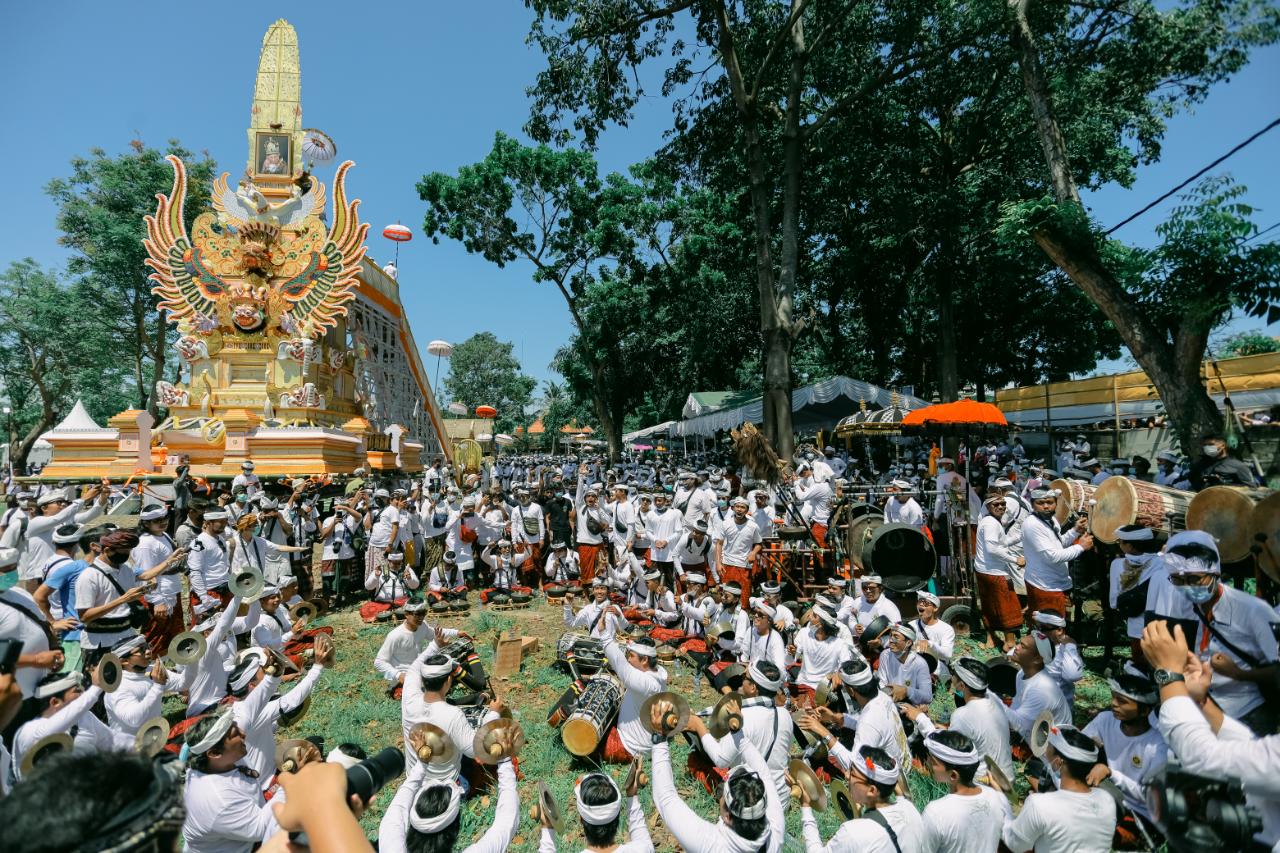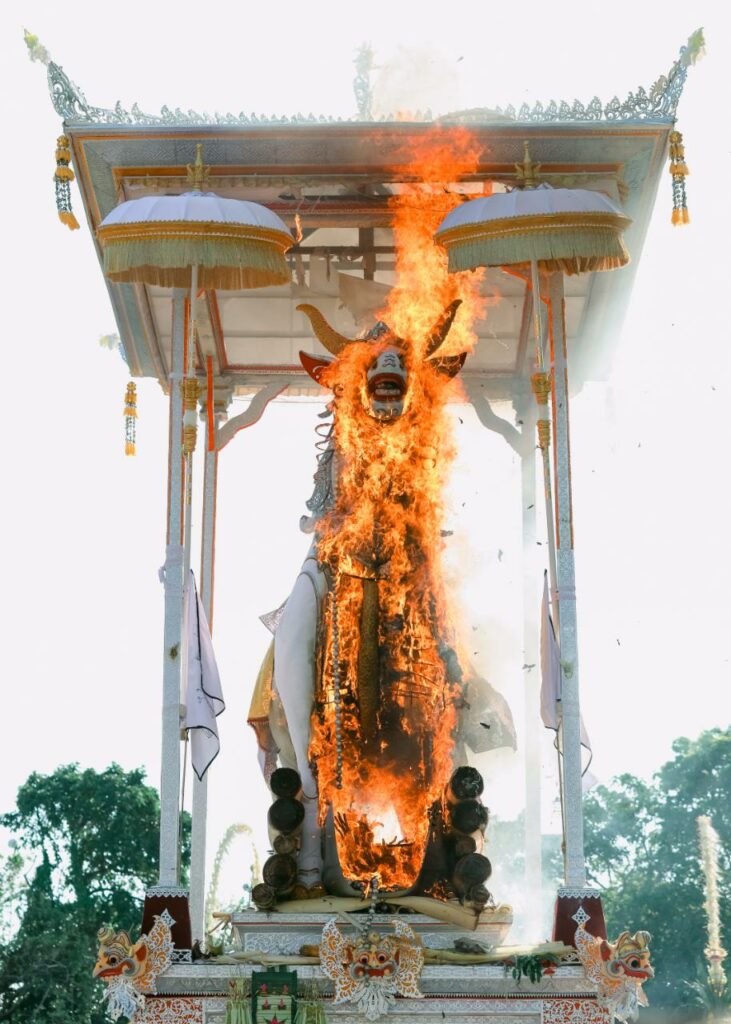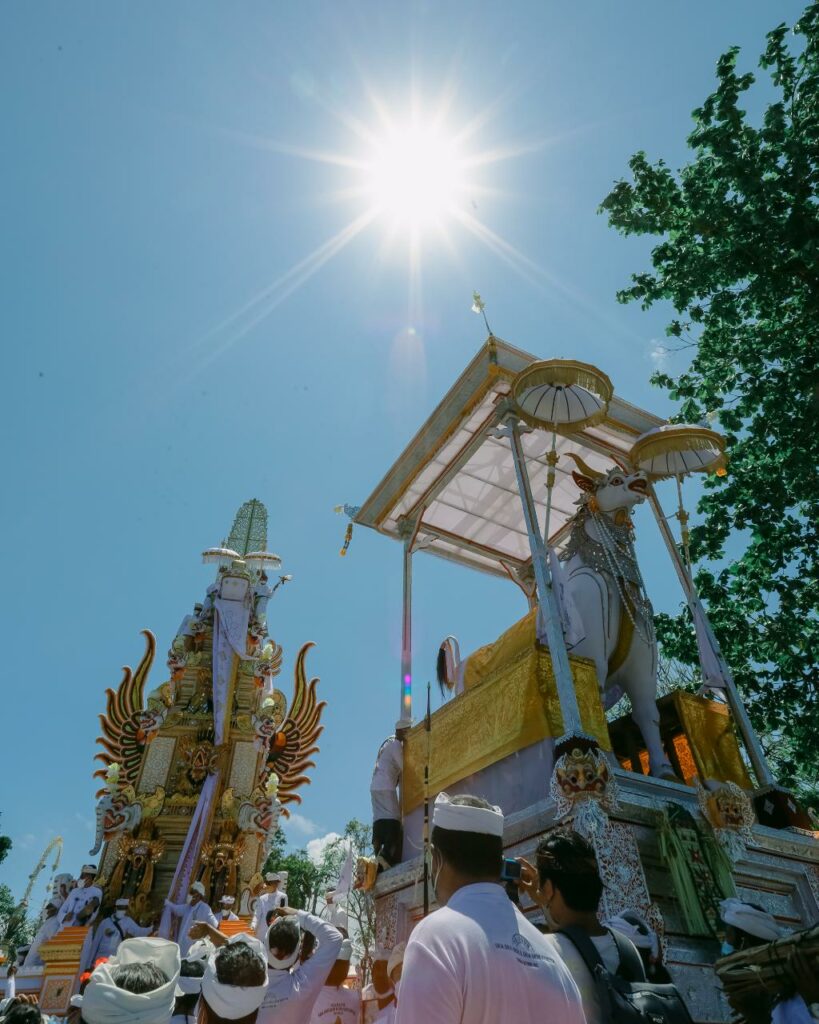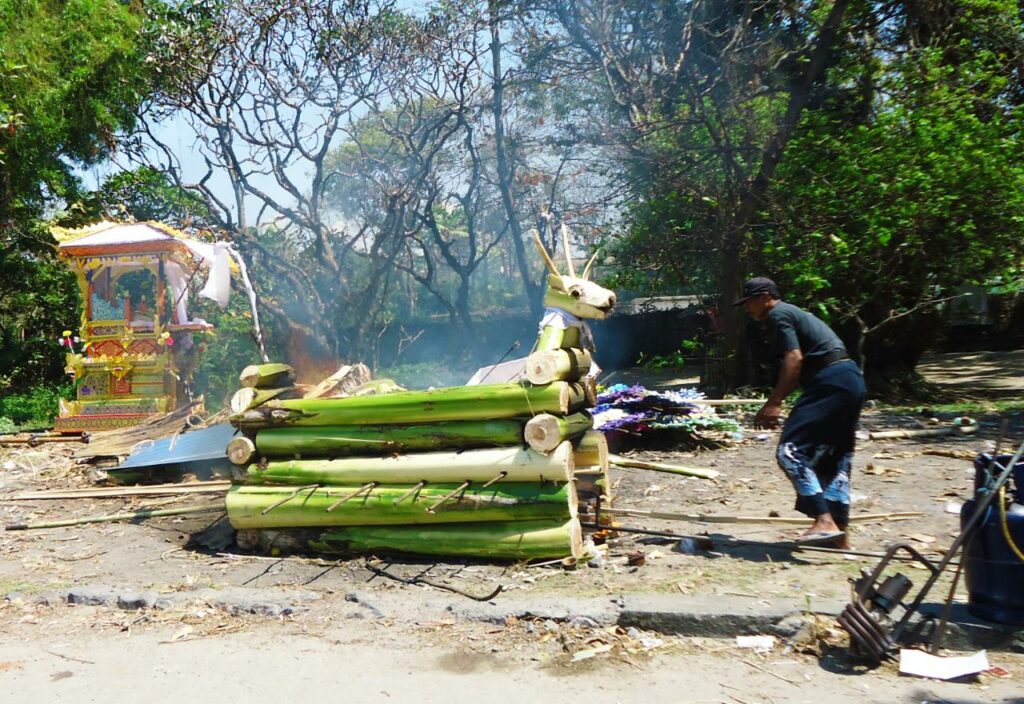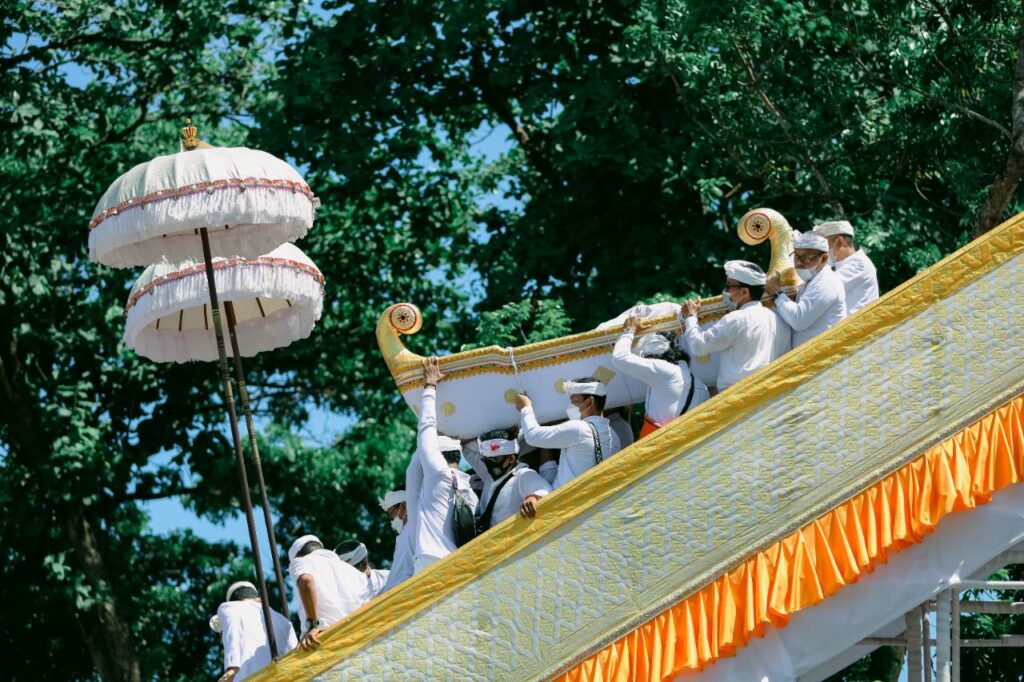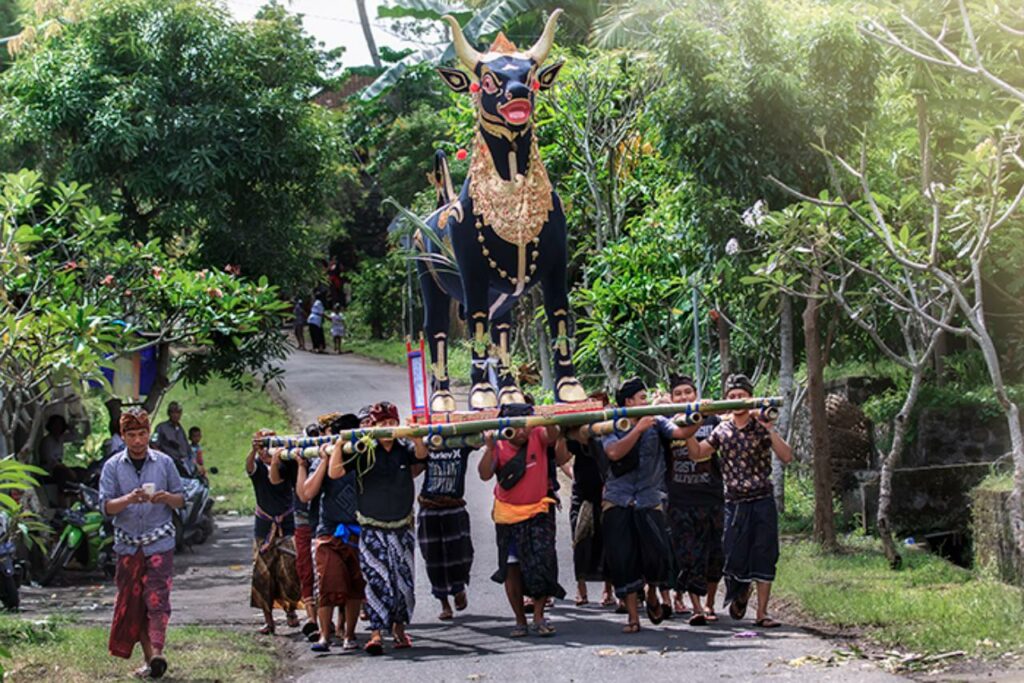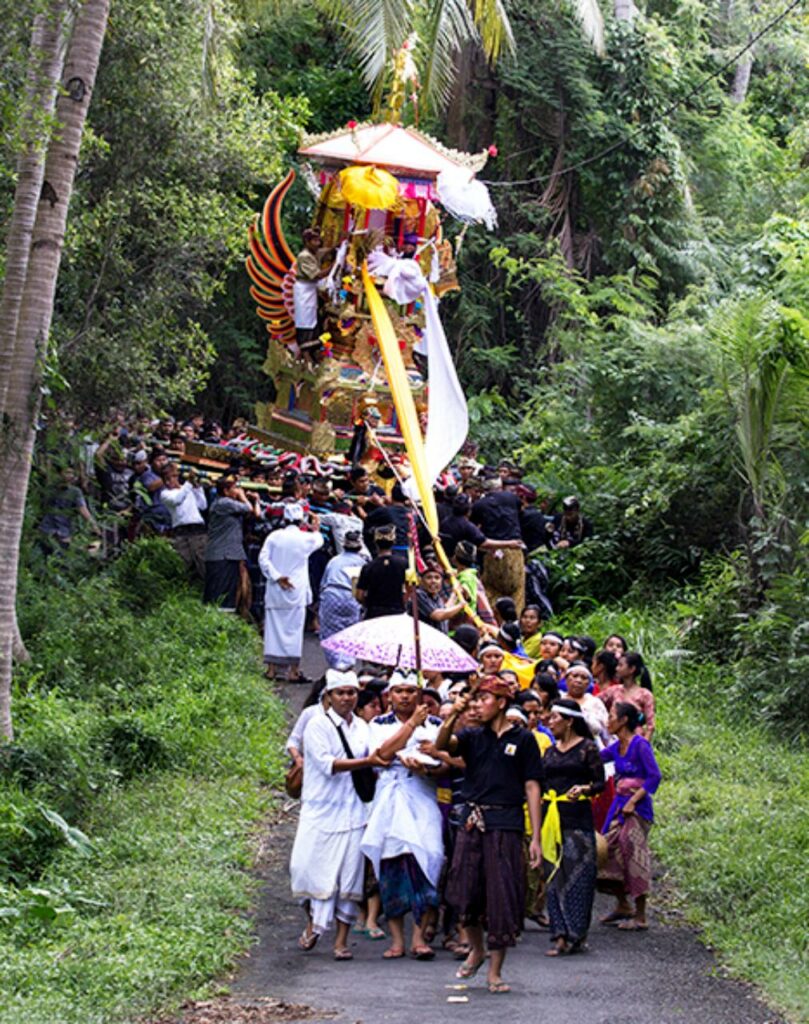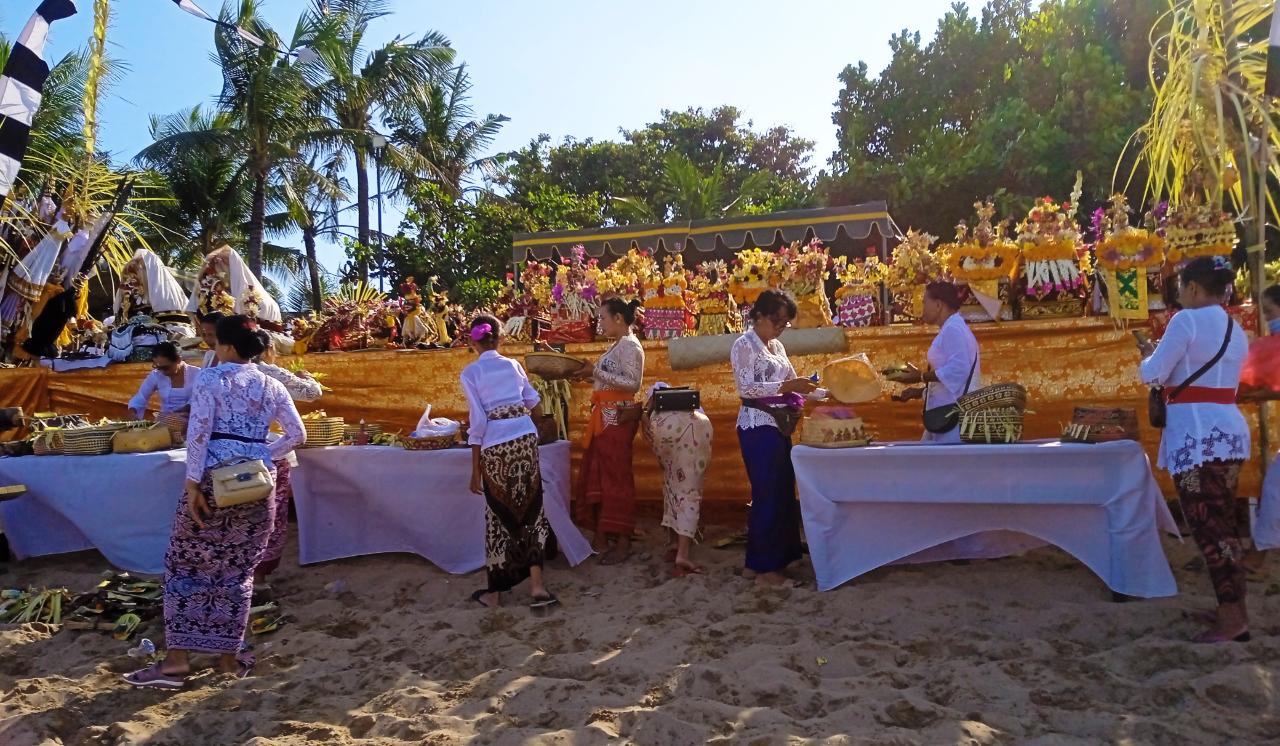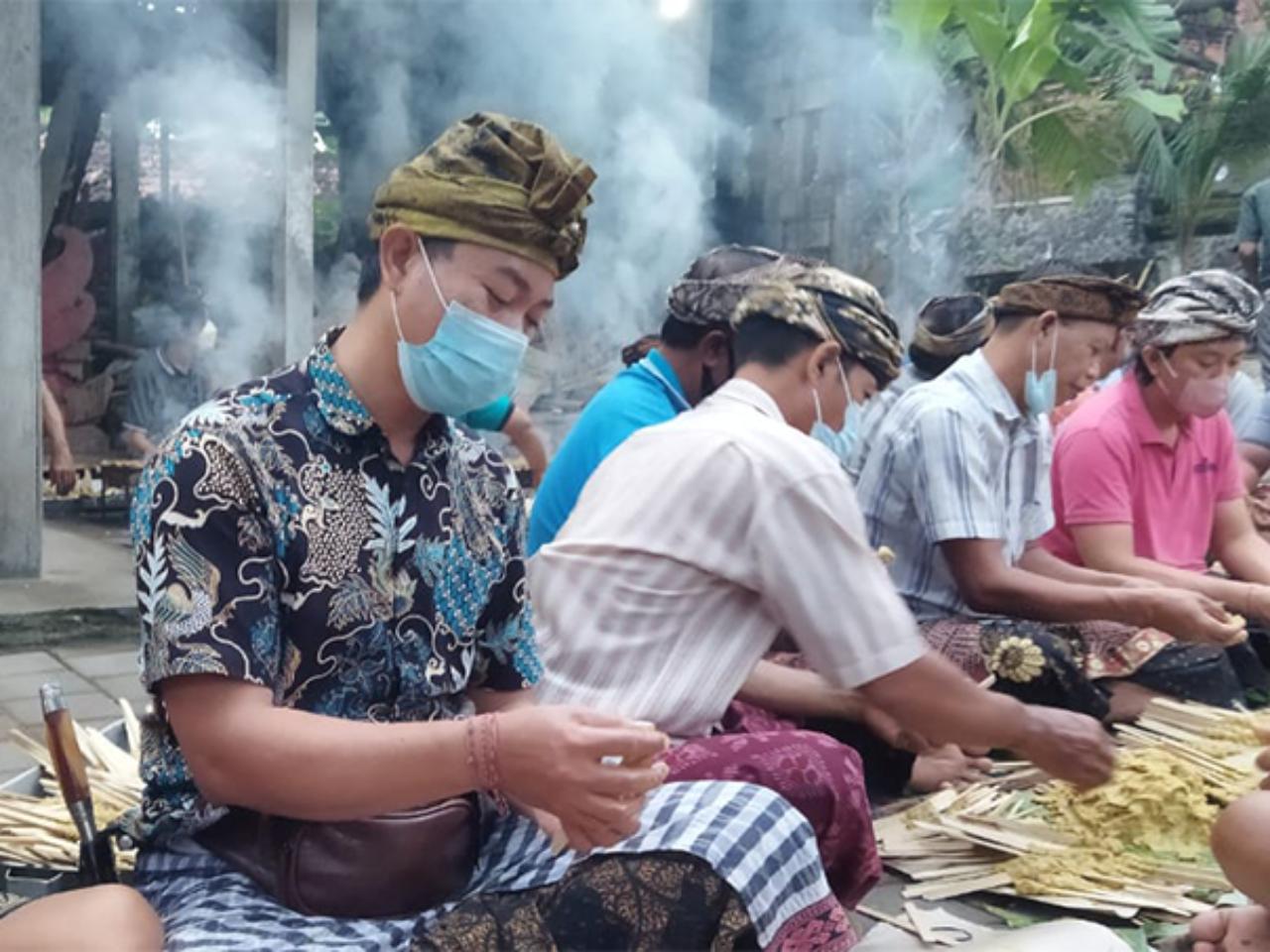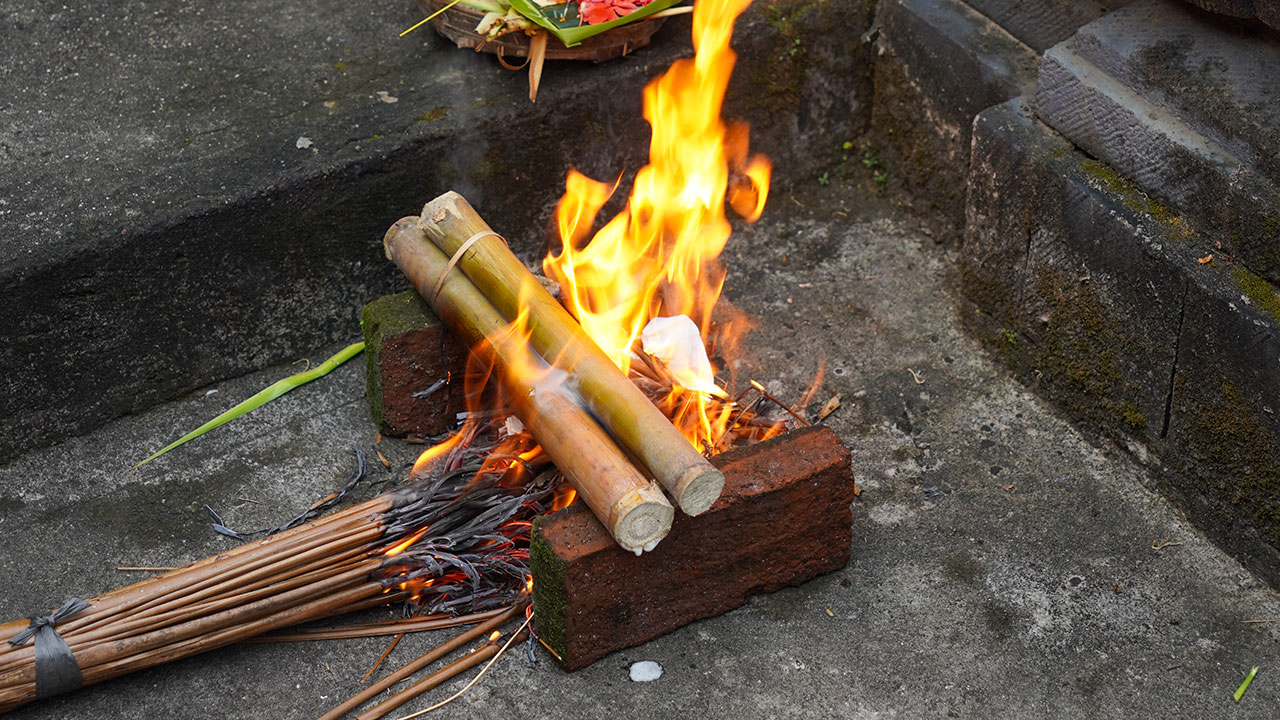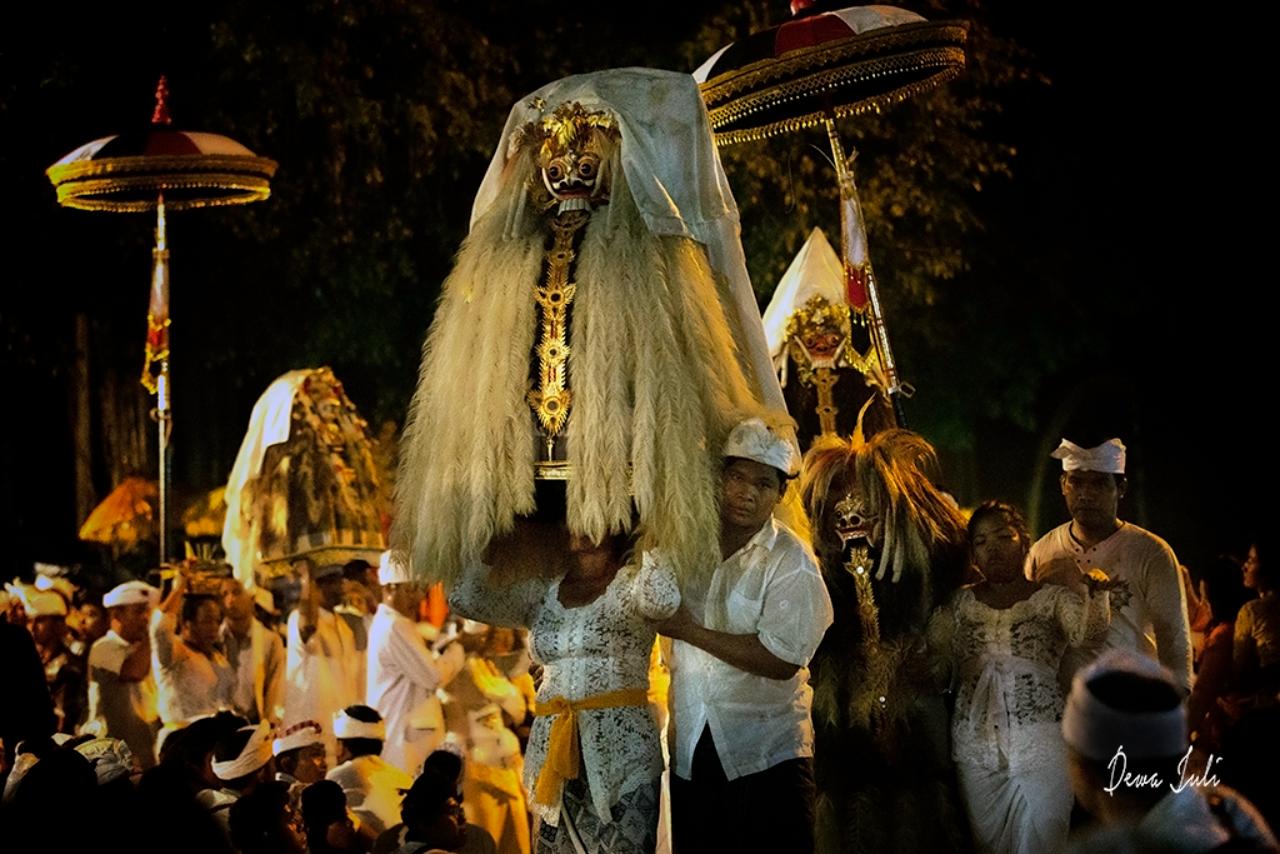Clad in Balinese traditional attire, men and women march side by side, escorted by a loud percussion orchestra, boisterous and yet dignified. No tears are shed because it will hinder the journey of the spirit to the final resting place. Tourists and many onlookers may be curious and questioning – where is the body to be cremated? Some men in the procession haul a gigantic lavishly adorned temple-like structure, all the way to the cremation site. This is where the physical body rests,as the spirit is preparing to leave. A cremation ceremony is breath-taking to watch, for as much as the procession is noisy, onlookers and traffic are still, in awe and reverence for the passing parade.
At the cremation site, the body of the deceased will be transferred from the decorated structure into a replica of a cow, or another symbolic animal made of paper pulp and wood. These mythical animals are the vehicle for the spirit on its way to the other realm. Then it is time for prayers to be recited before the cremation pyre is lit. At the same time that the pyre is lit, the Balinese orchestra start playing the percussion in beleganjur tune – it is a battle song about the soul’s fight with evil as it escapes into the heavenly realms. The fire is going and starts burning the vehicle and its physical passenger,as the spirit leaves the body; the flame begins modestly but quickly increases in size and intensity, burning bright and fast.
After the cremation is done, the family collects the ashes and places them in a coconut shell which is then released into the ocean or lake. This is the body’s final return to the earth and marks the departure of the spirit.
The body of human is made up of the five elements called the Panca Maha Bhuta; earth (solid), water (liquid), fire (heat), air (gas), and space (where the spirit resides). The body is nothing more than an impure and temporary shell – a container to the soul and its anchor to earth. The purpose of the cremation ceremony is to speed up the process of returning the Panca Maha Bhuta elements to their origin. In other words, to sever connection of the spirit with the worldly realm, so that it will be easier and lighter in travelling to the realm of the gods.
Balinese cremations are a big and an expensive ritual. All residents of the banjar (neighborhood) must assist in the process. Many offerings have to be prepared and arrangements made for the procession. All the deceased’s kin and extended family must take time from their regular jobs and concentrate upon the rituals for the final send off.
It is believed that the soul of the deceased will soon become a deified ancestor with a great power to help the living kin, therefore throwing a big and elaborate ceremony is a way to show respect, and also a good start in maintaining the relationship with the ancestor. Balinese take pride in being able to carry out this important obligation as family members and therefore, the Ngaben ceremony must be welcomed sincerely even though it takes a huge expenditure in time, commitment and money.
Some villages financial situation and circumstances such as the pandemic, led to a set of regulations to allow a mass cremation in every few years in order to provide a cost-efficient ceremony without reducing the glory and the essence of the cremation. Bodies are interned and then recovered before the cremation. However, Hindu priests and religious leaders are normally cremated right away, while the royal families will need several months to prepare the special and elaborate cremation ceremony.
<< If you liked this article, you may also like our other articles >>
To chat with our marketing partner about your business, please contact The Travellist
